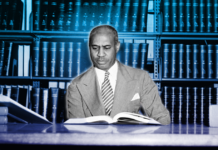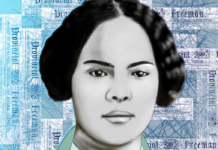If COVID-19 has taught America anything, it has confirmed that the nation still has a race problem.
A year shy the 100th anniversary of the 1921 Tulsa Race Massacre, a human tragedy that led to the mass burials of nearly 300 black Americans, archeologists postpone their planned April 1 test-excavation out of precaution due to the coronavirus outbreak. The test-excavation would have determined if the remains found in the cemetery’s colored section belonged to the 1921 Tulsa Race Massacre victims or were fatalities during the 1918 Global Flu Pandemic.
The U.S. has a history of filling mass graves with people of color; it’s a recurring theme that visits every century, dating back to the original 13 colonies.
For millennials, and quite frankly most Americans, the idea of preparing mass graves in such iconic spaces as New York City is troubling. Because in some larger U.S. cities, communities are digging trenches for the fallen coronavirus victims—and most of them are people of color.
Numerous are the mass graves filled with the first inhabitants of North America—the indigenous natives. The Wounded Knee massacre at the hands of the U.S. 7th Cavalry in December of 1890 in South Dakota led to a mass grave burial of 250 indigenous people. But the massacre’s gravesite isn’t an anomaly; in addition to that horror are the enslaved Black American unmarked mass graves throughout the American south.
Both groups have experienced massive ethnic losses due to either viral pandemics or racial violence. Whatever the cause for these mass graves, the negative impact that white supremacy bears on communities of color—whether intentional or not—has always stood at the intersection for why the majority of people filled in American mass graves are and continue to be people of color. Hence, COVID-19’s pandemic is no exception.
Untold Truths
Consider this: Left on the bookshelves collecting decades of dust are the untold chronicles of thousands of mass graves scattered like autumn leaves across this country. A lack of teaching the truth regarding the brutality of White supremacy towards communities of color for fear of imparting White guilt into American children is the pathology for the continued stagnation in the lack of empathy needed to crush systemic racism to pieces.
Therefore, the lack of teaching the narratives of people of color creates a lack of empathy that later converts to policies that are inaccessible to many people of color: health care, quality education, economic mobility, etc.
Since Brown v. Board of Education, America hasn’t done its due diligence in creating equal educational opportunities for these communities, pathways that would lead to more doctors and medical researchers of color to help aid in the closing of racial disparity health gaps.
The only way to break the perpetual cycle of racial inequity in this country is to teach history accurately, so tomorrow’s leaders who sit in classrooms today will grow into compassionate doctors and medical researchers tomorrow. Moreover, the only way to make America more equitable for people of color—black, brown and indigenous—is school reform, starting with the history lessons—less sugar coating and more bitter truth.
I’ll admit the idea of school reform is frightening to most middle and upper-income Americans. They know that true equality will come at a cost for them. Whether it’s monetary or social-emotional, White Americans will have to deal with the guilt they’ve carried from their ancestors in-order for this nation to move forward compassionately.
But the cost of being a person of color in America, especially during the COVID-19 outbreak, is far harsher than any price the White majority has ever paid since this nation was conceived.
In Chicago, Black people have accounted for 72% of COVID-19 deaths, while making up less than a third of the city’s population. 7 out of 10 COVID-19 deaths in Louisiana are Black while Blacks only represent 32% of the state’s population. Nationwide, Blacks account for 40% of COVID-19 deaths, while only representing 13% of the country’s population.
What COVID-19 has really taught America is that White people living today have become the very victims of their own collective doing. In 2020, they are on house arrest, social isolation, as the nation struggles to understand why and how a virus could do so much damage to the American economy, destroying their businesses and all sense of their privileged normalcy, while communities of color endure the most suffering, Hence, the virus continues to show no mercy to America’s most vulnerable communities.
Nevertheless, there are bright spots. Schools in Oklahoma are beginning to teach about the 1921 Tulsa Race Massacre. Hence now is the time for America to face its reflection in the mirror and begin teaching its bittersweet history, too. This is the call to action. It’s a chance for us to get it right for the next generation, a time to teach truth that will develop compassionate citizens. So when a pandemic arrives again, America’s race problem no longer appears because it would have been cured in its schools.










